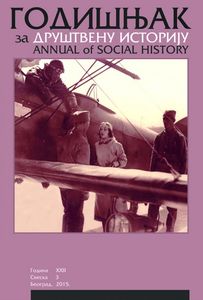Београдска управа и развој простора леве обале Саве 1934–1941
Belgrade City Government and Development of the left Bank of the River Sava 1934–1941
Author(s): Goran AntonićSubject(s): Local History / Microhistory, Interwar Period (1920 - 1939)
Published by: Udruženje za društvenu istoriju
Keywords: left bank of the river Sava; New Belgrade; interwar period; urban development; Belgrade municipality
Summary/Abstract: Until the First World War left bank of the river Sava was the border of the territory which is due to its location, water flooded land and wetlands remain undeveloped. With the formation of the Kingdom of SCS at the end of 1918, that terrain became suitable for the development of Belgrade, due to its relatively short distance from the city center and because of the opportunity to integrate the neighboring Zemun into the capital. The first ideas about the spread of Belgrade across the Sava River were formed during the preparation of the General Urban Planning of Belgrade in 1923. However, only with the development of the bridge of King Alexander and his inclusion of this area into the Belgrade in 1934 was created more favorable conditions for implementation of urban planning. By the beginning of World War II in 1941, the Belgrade administration developed a regulatory plan for left bank of the Sava and began with restoration work in this field, in order to undertake planned construction. Also, it was built Belgrade Fair, started the construction of the racecourse, and from the mid-thirties public transport began to traffic. At the same time, it was formed unplanned settlement “New Belgrade”, with which the first populations of the Belgrade began to settle over the Sava River. With that it had begun the process of urban development in this area and setting the foundations of New Belgrade, which was built in this area after World War II, at the time of socialist Yugoslavia.
Journal: Godišnjak za društvenu istoriju
- Issue Year: 2015
- Issue No: 3
- Page Range: 47-76
- Page Count: 30
- Language: Serbian

